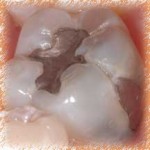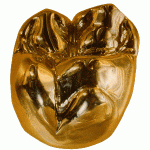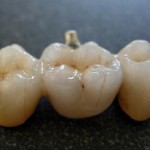What is a dental filling?
A dental filling is a dental restorative material used to restore the function, integrity and morphology of missing tooth structure. The structural loss typically results from caries or external trauma. It is also lost intentionally during tooth preparation to improve the aesthetics or the physical integrity of the intended restorative material.
Dental fillings can be divided into three broad types:
This technique involves placing a soft or malleable filling into the prepared tooth and building it up before the material sets hard. The advantage of direct restorations is that they usually set quickly and can be placed in a single procedure. Since the material is required to set, limited energy can be passed to the tooth from the setting process without damaging it. Where strength is required, especially as the fillings become larger, indirect restorations may be the best choice.
This technique of fabricating the restoration outside of the mouth using the dental impressions of the prepared tooth. Common indirect restorations include inlays and onlays, crowns,bridges, and veneers. Usually a dental technician fabricates the indirect restoration from records the dentist has provided of the preparation. The finished restoration is usually bonded permanently with a dental cement. It is often done in two separate visits to the dentist. Common indirect restorations are done using gold or ceramics.
A root canal filling is a restorative technique used to fill the space where the dental pulp normally resides. When the pulp dies,it is removed and the resultant hollow space is filled with materials like gutta percha and silver points.
Types of filling material
There is no one type of dental filling which is best for everyone. Different individual present with different types of complaint and damage. The suitable type of filling is determined by the extent of repair, whether you have allergies to certain materials, the location of the damaged tooth and cost of the filling material.
1. Amalgam
 Amalgam is an alloy of silver, mercury, tin copper and zinc. It is relatively cheap and stronger  compared to other filling materials. Amalgam filling can last up to 10 years due to its strength,  provided that there is no leakage around the margins of the restoration which will lead to  development of secondary dental decay. Amalgam is used at areas where the occlusal load is  high, such as the back tooth. However, due to its dark colour, this filling material is not used in  the front tooth as it is aesthetically not pleasing.
Amalgam is an alloy of silver, mercury, tin copper and zinc. It is relatively cheap and stronger  compared to other filling materials. Amalgam filling can last up to 10 years due to its strength,  provided that there is no leakage around the margins of the restoration which will lead to  development of secondary dental decay. Amalgam is used at areas where the occlusal load is  high, such as the back tooth. However, due to its dark colour, this filling material is not used in  the front tooth as it is aesthetically not pleasing.
2. Composite
The main advantage of dental comp0site over amalgam is improved aesthetics. Composite is a tooth coloured material and it comes in a wide range of tooth colours allowing near invisible restoration of teeth. Composite is bonded to the tooth with the use of dentine bonding agent. This strengthens the tooth structure. Unlike amalgam, there is no need to create retentive features which destroys healthy tooth structure because composite bonds to tooth chemically. Therefore, using composite material as filling is proven more conservative and less tooth preparation is needed.
Composite resin restorations have several disadvantages. The material is technique sensitive. If it is not placed properly the restoration may fail prematurely. It is moisture sensitive, thus needing the application of rubber dam which will be otherwise impossible in teeth which is partially erupted or unfavourably positioned. Composite take longer time to place than amalgam fillings. The material is also significantly more expensive than amalgam. The strength is also lower compared to amalgam, especially when placed in the posterior teeth. Composite resin undergoes shrinkage after polymerisation process takes place but it can be reduced by altering the molecular and bulk composition of the resin.
3. Porcelain
Porcelain fillings are used as inlays or onlays which is bonded to the tooth.They can be matched to the color of the tooth and resist staining.A porcelain restoration generally covers most of the tooth. Their cost is similar to gold. If decay or a fracture has damaged a large portion of the enamel and dentine, a crown, or cap, may be recommended. Decay that has reached the nerve may be treated in two ways: through root canal therapy (in which nerve damaged nerve is removed) or through a procedure called pulp capping (which attempts to keep the nerve alive).
4. Gold
 Many experts believe that gold is the best filling material due to it’s biocompatibility and strength. Gold fillings can last up to 20 years and is well tolerated by the gum tissues. It is used as inlays.The material is also very expensive, thus patients prefer cheaper material like amalgam.
Many experts believe that gold is the best filling material due to it’s biocompatibility and strength. Gold fillings can last up to 20 years and is well tolerated by the gum tissues. It is used as inlays.The material is also very expensive, thus patients prefer cheaper material like amalgam.

